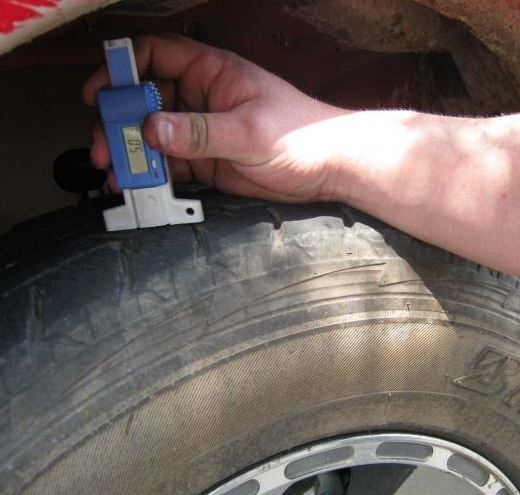Fresh from closing off the record-breaking 2013 Tyre Check season, Bridgestone has released a list of its most important tips for motorists based on feedback from its tyre specialists who conducted the tyre surveys. Over 6000 tyres across South Africa were surveyed for damage, tread depth, and inflation pressure in 2013. Tyre mis-matching on vehicles was also surveyed.
1. Check tyre pressure every two weeks
Approximately ten percent of tyres surveyed were incorrectly inflated. Tyres that are over-inflated wear in the middle and cause reduced roadholding. Under-inflated tyres wear on the shoulder and also affect roadholding. In addition, though, under-inflated tyres build up excess heat which can lead to a blowout.
2. Check tyres for damage and tread depth when checking the pressures
Cuts, bruises, bulges and embedded objects are the most common tyre defects, and any one of these can cause sudden tyre failure. Check your tyres frequently to ensure that you are not at risk of a blowout caused by tyre damage. Tyres may not be worn beyond 1.6mm or the tread wear indicator (TWI), if equipped. In practice, tyres with under 3mm of tread remaining will no longer disperse water effectively and the vehicle will be more likely to aquaplane on a waterlogged road. When you inspect your tyres, look out for uneven wear which could indicate a suspension or wheel alignment problem.
3. Ensure valve caps are fitted to each tyre valve
Valve caps protect the tyre valve from being contaminated by dust, sand and organic matter. If foreign objects become lodged in the valve, it may start to leak, causing a slow puncture. This can lead to the dangerous scenario of a motorist unknowingly driving on an under-inflated tyre. Ensure all tyre valves have caps fitted to minimise this risk.
4. Avoid mixing different tyres on the same axle
When tyres of a different tread pattern (or from different manufacturers) are mixed on the same axle, the vehicle’s stability can be affected. The vehicle may respond differently in left- or right-hand bends, and it may pull to one side under braking. Some vehicles surveyed in the 2013 Tyre Check had four different brands of tyre fitted. (Four completely different tyres on the same vehicle!)
5. Inspect wheels as well as tyres
When you check your tyre pressures, check the wheels too. Look for cracks or dents in the wheel which could have arisen from impacts with road hazards – check the tyre for associated damage too. Look for oil or grease leaking from the hub which could be related to a wheel bearing problem. Check for missing or loose wheelnuts or bolts, and when you do your two-weekly check, don’t forget the spare wheel!
Also view:
